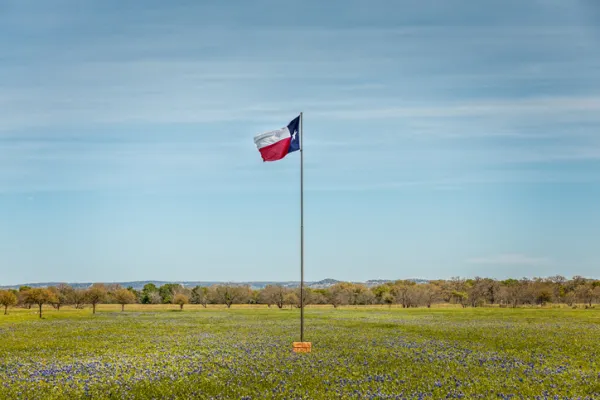With his retirement date just a month away, Utah Retirement System’s longtime chief investment officer Bruce Cundick has a storied tenure to look back on.
Cundick, whose career is being celebrated this week at the Institutional Investor Festival, is officially leaving on January 14. His replacement, one-time Oregon State Treasury CIO John Skjervem, has already started working at the fund.
Skjervem has big shoes to fill, as during his nearly 20-year tenure at URS, Cundick took the fund about $13 billion to roughly $43 billion by employing unique investment strategies. Cundick’s career is defined by moments of clarity that led to this innovation, from an embarrassing moment that led him to invest in hedge funds to a serendipitous meeting in Chile that led to agricultural investing abroad.
The first of these came early in his tenure.
“[URS] was a traditional public pension plan in that it had quite a bit of public equity, which from 2000 to 2002, did not do well,” Cundick said. Around that time, Cundick attended an annual meeting of state pension heads, many of whom were lamenting similar performance woes.
“I made a comment which turned out to be very embarrassing for me because I was new to the industry in public pension plans,” he recalled. “I said, ‘Well, it's about your investments. You've lost all this money because of your investments.’”
His fellow CIOs were quick to push back, explaining that the public equity market’s tear had led union heads to ask for more benefits and state legislators to stop funding the plans. Their problem wasn’t badly performing investments — it was politics. Although Cundick came away from that interaction red-faced, he also gained clarity from it. While other plans were suffering from a lack of contributions and higher obligations, URS was not.
“That kind of became an epiphany for me,” he said, adding that this realization is what led URS to invest in hedge funds.
The way that Cundick thinks about hedge funds — and all of URS’s investments — is through a risk management lens. He believed hedge funds protected a portfolio against a recession in the public markets, but came to realize that there are other risks to protect from like inflation, deflation, and high growth.
“If you’re going to diversify, you just can’t look at one quadrant,” Cundick said. He was particularly concerned about high inflation, given his tenure in the insurance industry in the early ’80s. That concern led URS to invest in real assets like table grape farms in Chile.
Cundick’s decision to invest in that country came from a personal experience. A lifelong member of the Church of Jesus Christ of Latter-day Saints, Cundick spent two years in Chile as a missionary for the church before beginning his career. The Mormon church owns significant agriculture investments globally, often using the land or farms grown on it to carry out missions, Cundick said. Inspired by these efforts, Cundick began to build an in-house agricultural investment team at URS, even recruiting one of his fellow missionaries.
The team bought stakes in farms growing avocados in Chile, citrus in Texas, almonds in Australia, and grapes in California. Today, Cundick still taps into the LDS Church’s agricultural expertise, consulting with members who are fluent in Spanish or are experts on macadamia nuts, for instance.
“I started realizing that doing things yourselves, you were going to get much, much better,” Cundick said.
This line of thinking also translates into the Utah pension’s due diligence process.
Part of the process that prospective investment firms go through involves in-person legal negotiations with Cundick’s team. Rather than immediately involving attorneys, members of the team will fly out to investment offices to talk with managers one-on-one about their contracts.
Cundick recalled one instance in which this process proved effective: At a meeting with a New York hedge fund, Cundick and the manager came to an impasse when the manager balked at taking out a provision that would make it not subject to material breaches of contract.
“I said, ‘What that sentence means is, it means that if you have a material breach of contract, you’ve basically defrauded your investor. You’re not going to take that out?’” Cundick recalled.
The manager refused, so Cundick declined to invest.
“I’m not going to put money with a guy that I’m giving him carte blanche authority to defraud me,” Cundick said. “And I’m really glad we didn’t do that because that manager didn’t do well.”
As Cundick wraps up his tenure at URS, the fund looks quite different from his early days. The investment team has swelled to employ some 40 professionals, and URS now has a formal training program for interns to grow talent from the ground up. The investment makeup has shifted too, with 70 percent of the organization’s real estate portfolio now managed in-house. In addition, the agricultural portfolio is fully managed by URS, and the fund plans to make direct investments in energy and private equity as well.
Cundick, for his part, plans to be active in retirement. Despite dealing with a cancer diagnosis, he plans to remain on the benefits finance committee for Intermountain Healthcare, as well as for a private equity fund that is launching next year. He said he hopes to continue to volunteer with his church and spend time with family. And, of course, he’ll be a cheerleader for URS.
“For me, it’s been a great career,” Cundick said.







